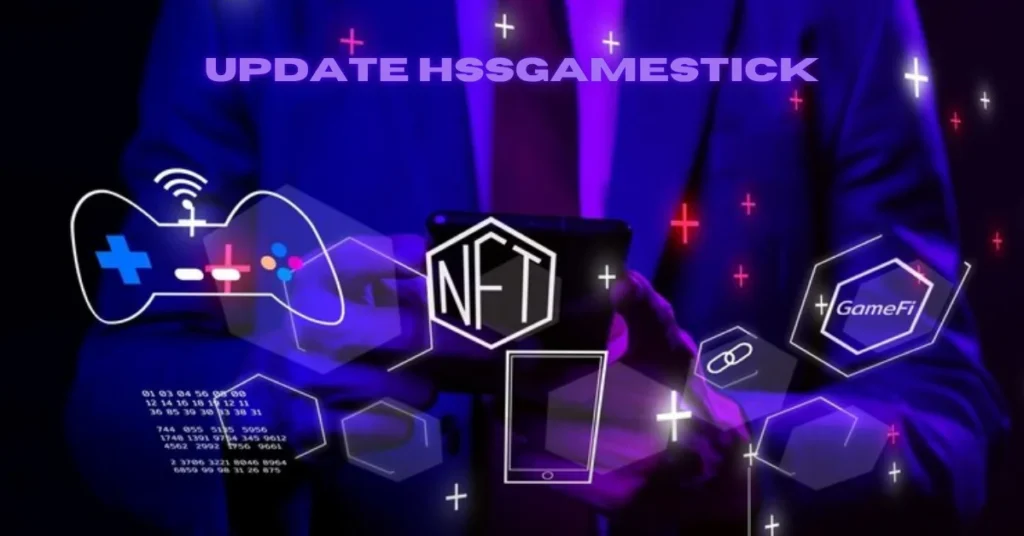🎮 Introduction
If you’re into plug-and-play gaming, you’ve probably heard of the update hssgamestick—a nifty little device that brings retro and classic titles right to your TV. But here’s the catch: as simple as it looks, keeping it running smoothly involves more than just plugging it in. System updates and storage management are key if you want glitch-free gameplay and faster load times.
🧩 Understanding the HSSGameStick Console
Key Features and Specs
The update hssgamestick is a compact Android-based gaming device that comes preloaded with hundreds of games. It typically includes:
- HDMI output for direct TV connection
- Wireless controllers
- 32GB to 64GB of storage
- USB/SD card expandability
What Makes It Popular?
It’s popular because it’s cheap, nostalgic, and extremely portable. Plus, the plug-and-play format makes it beginner-friendly.
🔄 The Importance of Regular System Updates
Why System Updates Are Essential
Updates are like vitamins for your GameStick. They:
- Fix bugs
- Add features
- Improve performance
Think of them as your console’s way of staying in shape.
Benefits of Updated Firmware
With each update, the developers often add compatibility for new file formats, new emulators, and improve UI navigation. Updates help your update hssgamestick keep up with gaming trends and eliminate frustrating issues.
🚀 Performance Enhancements
Boosting Speed and Reducing Lag
An updated system = a faster system. With the right firmware:
- Loading times shrink
- Frame rates improve
- Background processes get optimized
Improved Compatibility with New Games
Newly added games may require updated emulators or BIOS files. Without updates, you might find your favorite ROMs not working or glitching.
🛡️ Security Improvements
Patching Vulnerabilities
Even simple devices like HSSGameStick can be vulnerable. Updates seal these gaps and help avoid malware or data leaks—especially if your GameStick connects to Wi-Fi.
Preventing Unauthorized Access
If you’re using third-party apps or downloading from the internet, updates help block suspicious files and code from interfering with your system.
🔍 How to Check for HSSGameStick Updates
Step-by-Step Guide
- Boot up your HSSGameStick
- Navigate to “Settings”
- Click “About Device” or “System Info”
- Tap “Check for Updates”
- Follow on-screen prompts
Automatic vs. Manual Updates
Some versions offer auto-update options, while others require a USB firmware flash. Manual updates might involve downloading firmware from the official source and flashing it via OTG cable or SD card.
💾 Managing Storage on HSSGameStick
Types of Storage Used
HSSGameStick supports:
- Internal storage (8GB–64GB)
- External storage (via USB or microSD)
Internal vs. External Storage
Internal storage handles the core OS and main apps. External storage can be used for:
- Game ROMs
- Media files
- Backup data
⚠️ Common Storage Issues
Insufficient Space Errors
Nothing’s worse than seeing a “Storage Full” message mid-download. Common culprits include:
- Too many ROMs
- Cache files
- Redundant emulator files
Slow Performance Due to Clutter
Too many files = sluggish performance. Clutter affects RAM usage and causes freezes, slow menu responses, and even crashes.
🧹 Best Practices for Storage Optimization
Clearing Cache and Unused Data
Go to:Settings > Apps > Clear Cache
Also, delete unused emulator BIOS files and duplicate games.
Moving Games to External Drives
Use a good-quality USB drive or SD card (preferably UHS-I). Store large game files externally and keep only essential apps on internal memory.
🎯 Tips for Smoother Gameplay
Keep Your Device Updated
This can’t be stressed enough. Outdated systems often cause:
- Crashes
- Unrecognized controllers
- Game freezes
Regularly Clean Up Storage
Set a monthly reminder to:
- Remove unused games
- Delete duplicate files
- Back up important data
📚 Game Management Strategies
Prioritizing High-Play Titles
Keep your most played games on internal storage for faster load times. Archive the rest.
Uninstalling Rarely Played Games
Ask yourself: “Have I played this in the last month?” If not, remove or back it up externally.
🛠️ Troubleshooting Update Issues
Common Problems During Updates
- Device stuck on boot
- Update failed message
- GameStick not detecting USB firmware
Solutions and Preventive Measures
- Always download firmware from trusted sources
- Use FAT32 format for USB drives
- Backup everything before starting
💾 Backup Before You Update
Why You Should Backup Game Data
Firmware updates can sometimes wipe your data. Backup ensures you don’t lose saved progress or custom ROMs.
How to Safely Backup and Restore
Use a PC or Android file manager to copy:
- ROM folders
- Save game files
- Emulator settings
🧠 Choosing the Right External Storage
USB vs. SD Card
Both work, but USB drives are generally faster. SD cards are more compact and better for portable setups.
Recommended Specs and Brands
Go for:
- 64GB+
- USB 3.0 (for speed)
- Brands: SanDisk, Kingston, Samsung
🧼 When to Consider a Factory Reset
Signs It Might Be Time
- Constant lag
- App crashes
- Settings not responding
How to Perform It Safely
- Go to Settings
- Choose “Backup & Reset”
- Select “Factory Data Reset”
- Confirm and wait
Important: Backup first!
🔮 Future-Proofing Your HSSGameStick
Staying Ahead with Updates
Always be on the lookout for:
- Emulator improvements
- UI upgrades
- New game compatibility
Community and Developer Support
Join forums or Telegram groups. Developers often drop update files, new ROMs, and bug fixes there first.
🏁 Conclusion
Your update hssgamestick can be a retro gaming powerhouse—but only if you keep it up-to-date and properly managed. System updates bring life to the console, and good storage habits keep things running buttery smooth. With just a little care, your GameStick can deliver years of fun with zero lag or glitches.






